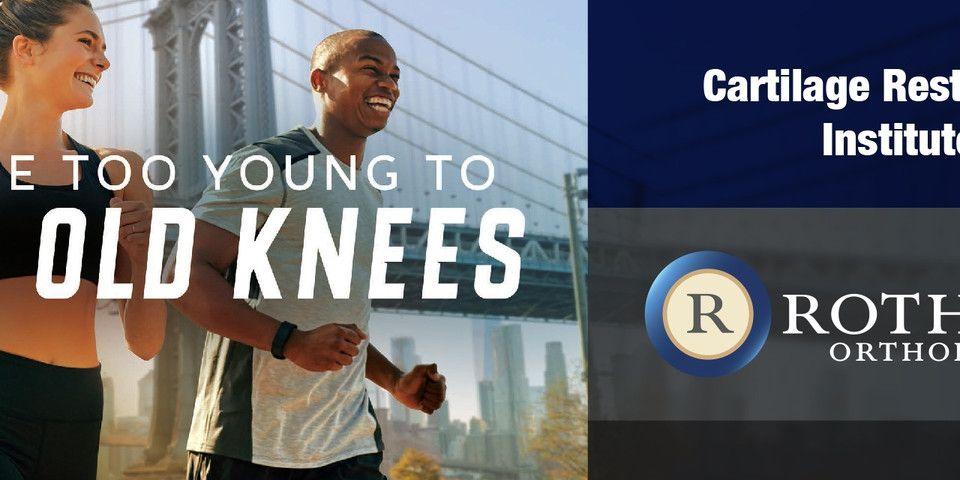Learn About What You Can Expect from Each Step of the Process for Osteoarthritis Treatment in Bergen County
At Rothman Orthopaedic Institute, we have extensive experience working with osteoarthritis patients. We are familiar with their needs and concerns and understand that the patient’s top priority is to quickly move through the treatment process and to return to a normal, healthy life.
It’s important to carefully and expertly administer each step in the process of osteoarthritis treatment in Bergen County. At Rothman Orthopaedic Institute, we emphasize attentive care, while striving to ensure that your treatments are efficient and your recovery is as quick as possible.
One of the most productive steps you can take to prepare for osteoarthritis treatment in Bergen County and to help that process move forward is to learn about the nature of this condition and the treatment options. This enables better communication with your doctors, allows you to consider the options available to you, and to take personal action to enhance your recovery.
Osteoarthritis Treatment: The Four Steps Leading to Recovery
Unlike rheumatoid arthritis, which is an autoimmune disease, osteoarthritis occurs as the result of physical wear and tear. While this usually occurs as the result of degradation associated with aging, it may also occur in those who have had joint injuries or damage in the past.
If this condition is affecting your life, it is essential that you pursue osteoarthritis treatment in Bergen County. Listed below are the four steps of the osteoarthritis treatment process.
-
Examination
Before a proper diagnosis can occur and treatment can commence, it is necessary to medically assess the nature, causes, and symptoms of your condition. An examination by an orthopaedic doctor or specialist is the first step of osteoarthritis treatment. During your examination, your doctor will inquire about your medical history, examine affected joints, and assess your particular symptoms. In some cases, an x-ray will be used to analyze joint deterioration. Laboratory tests may also be utilized to determine if your condition truly is osteoarthritis or a disease that produces similar symptoms. -
Diagnosis
After an examination has taken place, an official diagnosis can be made. The following risk factors make patients susceptible to this form of arthritis and make a positive diagnosis likely:-
Old age
-
Prior joint injuries
-
Bone deformities
-
Obesity
-
Genetic history of arthritis
-
Sex (females tend to develop osteoarthritis at higher rates)
-
Repetitive physical stress in work or activities
A positive diagnosis is similarly likely in patients displaying the following typical osteoarthritis symptoms:
-
Joint pain
-
Joint stiffness of immobility
-
Tenderness
-
Inflexibility
-
Grating sensations or sounds in affected joints
-
-
Non-Surgical Treatments
Among those who have been diagnosed with osteoarthritis, the severity of this condition varies considerably. For those whose joints are less damaged or whose arthritis is in an early stage, non-surgical treatments can often effectively relieve painful symptoms, improve mobility, and slow the further advancement of this condition. Non-operative treatments that may be recommended include lifestyle modifications (such as weight loss, removal of high-impact activities from routine, etc.), the use of braces and assistive devices, physical therapy, anti-inflammatory drugs, or corticosteroids. -
Surgery
While surgery is not necessary in all cases, for many patients it offers the most realistic and effective means of pain relief and the restoration of full physical function. If non-operative treatments have proven insufficient, your doctor may recommend one of the following surgical solutions:-
Joint replacement: The removal of joints and bone segments and replacement with artificial joints.
-
Arthroscopy: Bone cysts, spurs, damaged lining, and fragments are surgically removed from the joint through a small incision.
-
Osteotomy: The long bones of either the arm or leg are realigned, relieving pressure from the affected joint.
-
Joint fusion: The fastening of bone ends to eliminate movement in damaged joints.
-
From the initial examination to your osteoarthritis treatment in Bergen County- and the recovery period that follows - the orthopaedic experts at Rothman Orthopaedic Institute will offer you the best care available. At Rothman Orthopaedic Institute, each step of your treatment process is performed with the utmost attentiveness and care. For more information, visit us here or contact us at 1-800-321-9999.
Related Services
Related Programs
-

Cartilage Restoration Institute
This is a center where patients can go to have their disabled joint biological resurfaced, realigned, and stabilized without having the joint replaced by artificial materials such as metal and plastic. It is well known that the outcomes of patients under the age of 50 undergoing artificial joint replacement are not as good as we would like. Therefore we feel the future of Orthopaedics is to try to restore a joint back to its original anatomy by realignment, ligament reconstruction, and cartilage restoration.Read More





